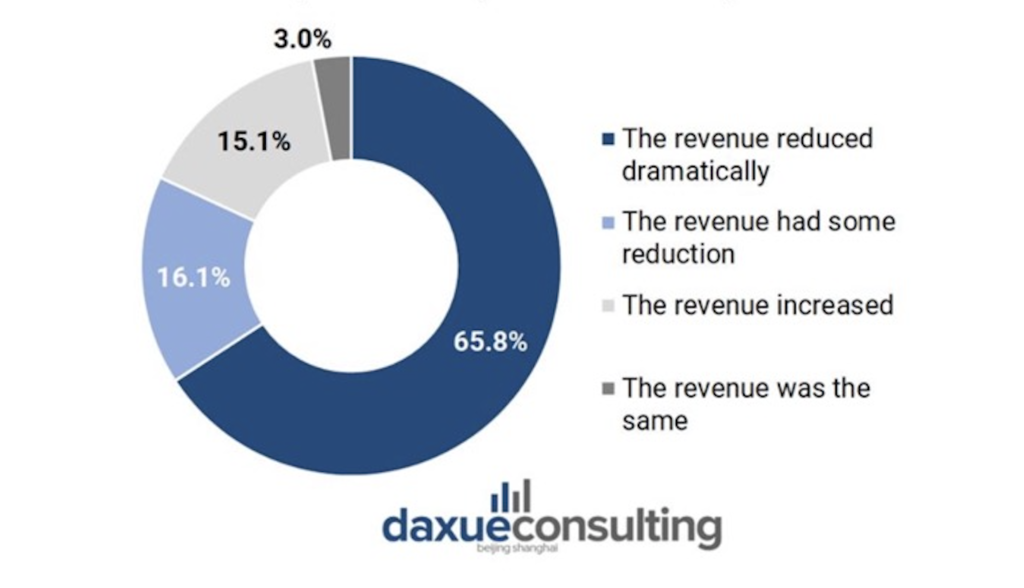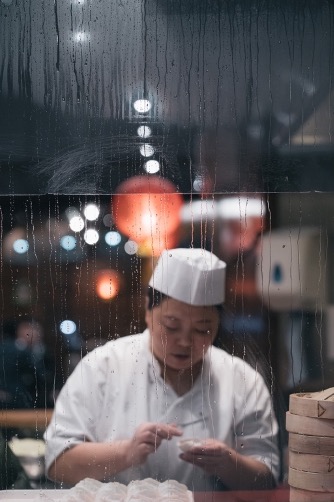China Paradigm interviewed Cotton Ding, owner of Cotton’s restaurant and bar to learn how the entrepreneur adapted the management and strategy of her full-service restaurant in Shanghai during the COVID-19 outbreak.
China’s catering industry during the COVID-19 crisis
All over China, the food and beverage industry has been highly impacted by the coronavirus (learn more on COVID-19 impact on China’s economy). As an illustration, in February 2020, it was around 80% of the revenues that have disappeared for the country’s restaurants. Another statistic published by the World Federation of the Chinese Catering industry revealed that more than 65% of restaurant owners have seen their take-out business revenues being drastically reduced as compared to the same period one year before.

While all these numbers are showing a clear negative impact on China’s Catering industry during COVID-19, Cotton Ding believes that the situation could have been even worst if the outbreak would have taken place at another time of the year. According to her, since restaurants work at a reduced pace during the Chinese New Year season, managers had naturally saved some money ahead which helped them facing the outbreak. Moreover, digital adoption and the well-established delivery industry in China (learn more about delivery during the outbreak in China) have offered new channels and opportunities to work. For instance, Cotton’s restaurants that had closed for more than five weeks had then adapted their opening hours, offered more brunches, and turned to more delivery following the outbreak.
The cost structure of a full-service restaurant in Shanghai
To better understand the repercussions on China’s catering industry during COVID-19, it is important to get a comprehension of the cost structure of a full-service restaurant in Shanghai. Over the last decades, China’s economy has developed greatly and the cost of labor in the country has increased significantly. As an illustration, the minimum wage has jumped from 1120 RMB in 2010 to reach almost 2500 RMB in 2019.

The same seems to apply for the rent cost in Shanghai. Accordingly, Cotton Ding explains that her rent has more than doubled over the last decade but, on the other hand, the price of food and beverages has not increased in the same proportion, thus obliging businesses to find ways to improve their performance. For the labor cost, Cotton Ding explains that her restaurants offer a fixed salary to which bonuses and benefits such as accommodation and meal allowance are added. She explains that in 1998 when she started her job as a bartender, her salary amounted to roughly 500 RMB while today, employees are paid 10 times this sum.
Then, besides fixed costs, she tries to manage her restaurant so that the costs of food and beverages do not account for more than 30% of the total costs. Thus, when managing a restaurant in a 1-tier city in China, fixed costs clearly represent the majority of the charges. Not opening for more than 5 weeks has really impacted those businesses that were already into difficulty.
‘When I first started in food and beverage in 1998, my salary was about 500 RMB. In 2003, if you hire someone you had to pay about 1500 RMB and now, you cannot find anyone below 5000 RMB’
The necessity of being flexible when managing a restaurant in a 1-tier city in China
While most of the Chinese population could not return to work, full-service restaurants in Shanghai faced the challenge of accustoming their offers to the new lifestyle of Shanghainese. Cotton Ding has always been able to adapt to new challenges and new environments. Indeed, she started by working in manufacturing plants in Shanghai, then as a bartender, and now Ding is managing two successful restaurants in a 1-tier city in China. Nevertheless, such unexpected events bring a lot of uncertainties and Cotton Ding affirms that she was worried when remembering the 35% of restaurants that did not survive the SARS epidemic in the 2000s’.
To avoid such an outcome, Cotton Ding explains that her business had to adapt to the new lifestyle of Shanghainese. To be able to deal with this new situation, her restaurants started to adapt its opening hours and thus started to offer more brunches and other deals to customers. Moreover, while restaurants started opening in the city, Shanghainese were still reluctant to go out thus obliging the industry to promote intensively its service and reassure customers via social media on the different hygienic measures taken by the establishments.

Related reading: A deep dive into China’s food industry
Listen to this episode here:










